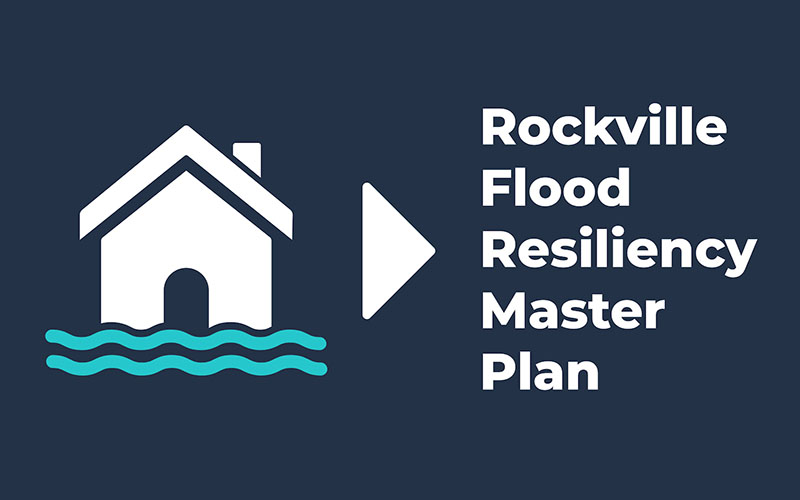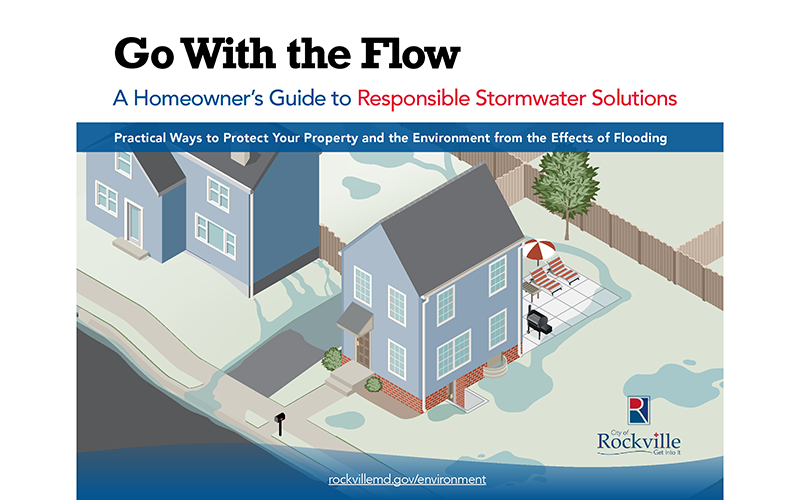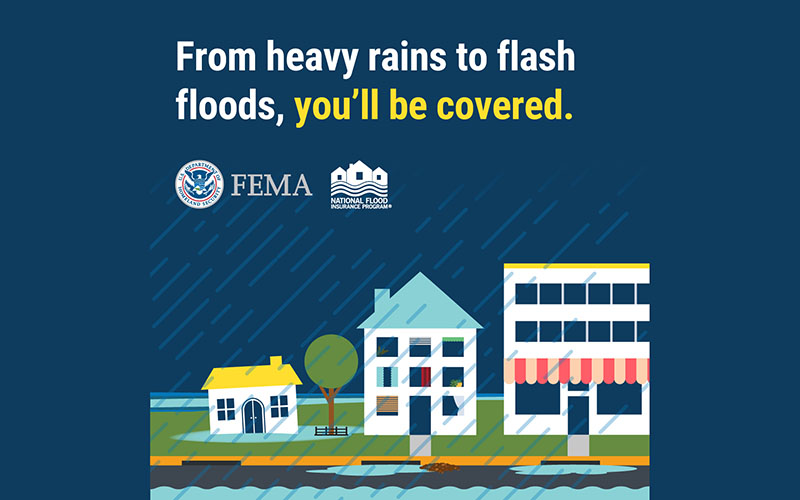All owners and occupants of properties located in the floodplain should understand the special requirements for building in the floodplain and how to reduce your flooding risk. The risk for flooding can vary within the same neighborhood and even property to property, but all properties are at risk of flooding. View the resources below to get prepared and reduce the impact of potential flooding.

Flood Resiliency Master Plan
Rockville is developing a Flood Resiliency Master Plan powered by advanced modeling and your input to protect our community from future flood risks. Get involved by registering for an open house, filling out the survey, and adding your experiences to the flood map at engagerockville.com/floodplan.

Flooding Guide for Homeowners
If you have flooding problems on your property or are thinking about expanding your driveway or patio, or adding an addition, read through Go With the Flow! A Homeowner’s Guide to Responsible Stormwater Solutions to learn ways to reduce flooding impacts to your home and neighbors. The guide is available in English, Spanish, and Simplified Chinese.

Flood Mitigation Assistance Program
The Flood Mitigation Assistance Program offers financial assistance through matching reimbursement funds to residents and property owners who have made improvements to their properties to mitigate future damage from flooding events.

Flood Insurance
If you have a mortgage from a federally regulated lender and the building(s) on this parcel are within the Special Flood Hazard Area (SFHA), then by federal law, your lender must require you to carry flood insurance. It typically takes up to 30 days for a policy to take effect. All property owners should consider flood insurance protection.
If you live in a high-risk flood area and have received federal disaster assistance – including grants from the Federal Emergency Management Agency (FEMA) or low-interest disaster loans from the U.S. Small Business Administration (SBA) – you must maintain flood insurance in order to be considered for any future federal disaster aid. Learn about the types of flood insurance and how to purchase.
Homeowners, renters, and business insurance does not typically cover flood damage. While some insurance policies cover costs from flooding if sump pumps fail, pipes burst, or a sewer backup occurs in the basement, they do not cover losses directly caused by flooding. Flood insurance will pay claims regardless of whether there is a Presidential Disaster Declaration.
The National Flood Insurance Program is a federally backed program that ensures affordable flood insurance for property owners. A NFIP policy covers direct physical losses to structures and belongings for property owners, renters, and businesses in the event of a flood. There are two kinds of coverage: building and contents. You have the option to select separate coverage amounts and deductibles for each.
- Building Coverage: Insures the structure only, not the contents or the landscaping. It does not cover finishing in the basement. Includes built-in appliances, such as electrical and plumbing systems, furnaces, water heaters, and refrigerators.
- Contents Coverage: Insures your belongings, but most items in your basement or below your lowest living floor are excluded.
contact
Jump To
Contact
Public Works Department
Environmental Management Division
240-314-8870
environment@rockvillemd.gov
Hours
Monday – Friday
8:30 a.m. – 5 p.m.